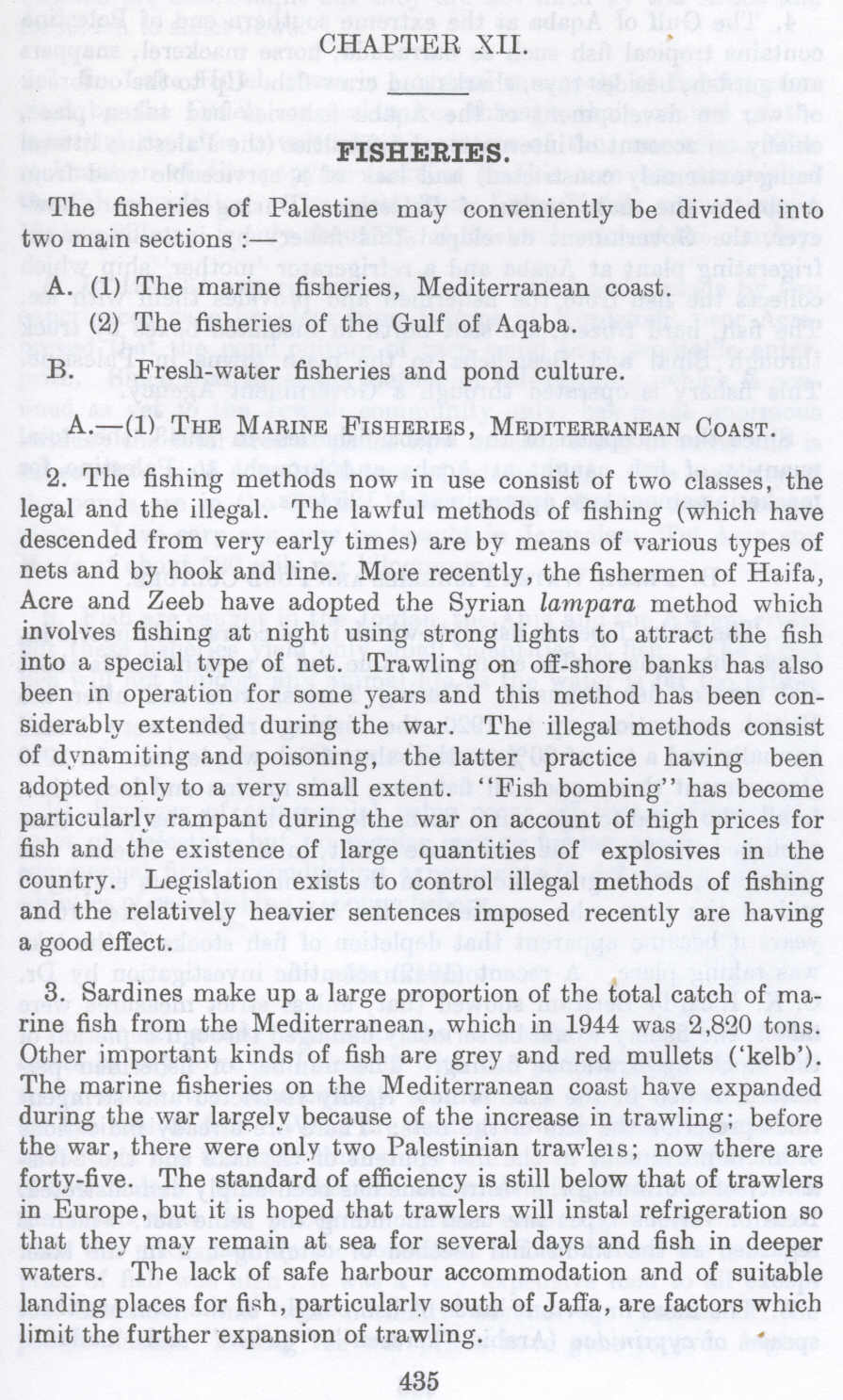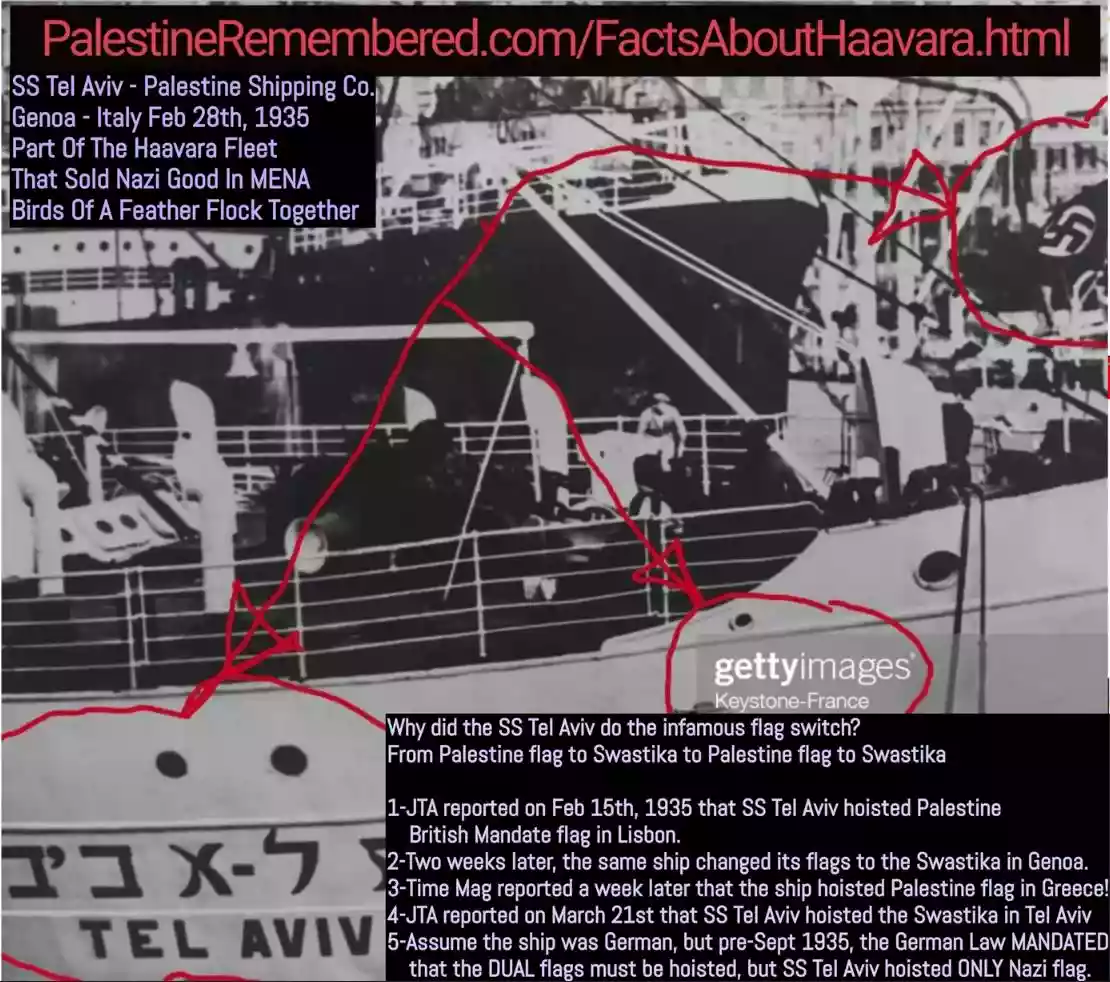| Prev | Next |  |
| Prev | Next |
| PalestineRemembered | About Us | Oral History | العربية | |
| Pictures | Zionist FAQs | Haavara | Maps | |
| Search |
| Camps |
| Districts |
| Acre |
| Baysan |
| Beersheba |
| Bethlehem |
| Gaza |
| Haifa |
| Hebron |
| Jaffa |
| Jericho |
| Jerusalem |
| Jinin |
| Nablus |
| Nazareth |
| Ramallah |
| al-Ramla |
| Safad |
| Tiberias |
| Tulkarm |
| Donate |
| Contact |
| Profile |
| Videos |
Fisheries in Palestine before 1948 (Nakba), British Mandate: A Survey of Palestine: Volume I - Page 435. Chapter XII |
Disclaimer
The above documents, article, interviews, movies, podcasts, or stories reflects solely the research and opinions of its authors. PalestineRemembered.com makes its best effort to validate its contents.


Post Your Comment
*It should be NOTED that your email address won't be shared, and all communications between members will be routed via the website's mail server.
FISHERIES.
The fisheries of Palestine may conveniently be divided into two main sections :-
A. (1) The marine fisheries, Mediterranean coast. (2) The fisheries of the Gulf of Aqaba.
B. Fresh-water fisheries and pond culture.
A.-(1) THE MARINE FISHERIES, MEDITERRANEAN COAST.
2. The fishing methods now in use consist of two classes, the legal and the illegal. The lawful methods of fishing (which have descended from very early times) are by means of various types of nets and by hook and line. More recently, the fishermen of Haifa, Acre and Zeeb have adopted the Syrian lampara method which involves fishing at night using strong lights to attract the fish into a special type of net. Trawling on off-shore banks has also been in operation for some years and this method has been considerably extended during the war. The illegal methods consist of dynamiting and poisoning, the latter practice having been adopted only to a very small extent. "Fish bombing" has become particularly rampant during the war on account of high prices for fish and the existence of large quantities of explosives in the country. Legislation exists to control illegal methods of fishing and the relatively heavier sentences imposed recently are having a good effect.
3. Sardines make up a large proportion of the total catch of marine fish from the Mediterranean, which in 1944 was 2,820 tons. Other important kinds of fish are grey and red mullets ('kelb'). The marine fisheries on the Mediterranean coast have expanded during the war largely because of the increase in trawling; before the war, there were only two Palestinian trawlers: now there are forty-five. The standard of efficiency is still below that of trawlers in Europe, but it is hoped that trawlers will install refrigeration so that they may remain at sea for several days and fish in deeper waters. The lack of safe harbour accommodation and of suitable landing places for fish, particularly south of Jaffa, are factors which limit the further expansion of trawling.
Page 435